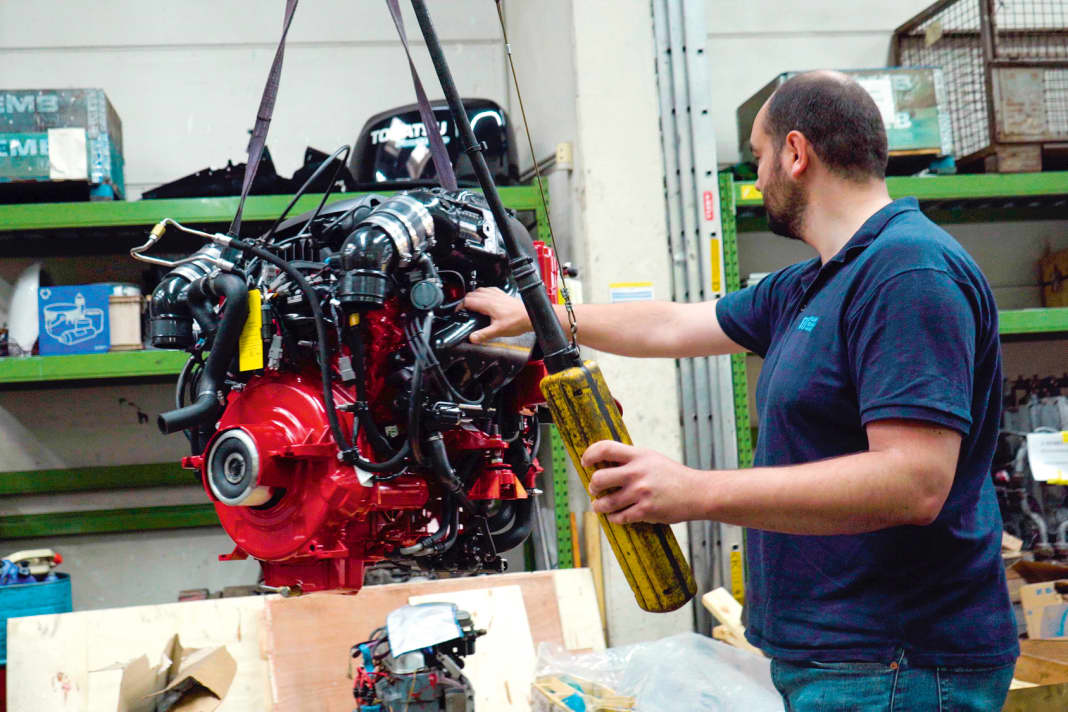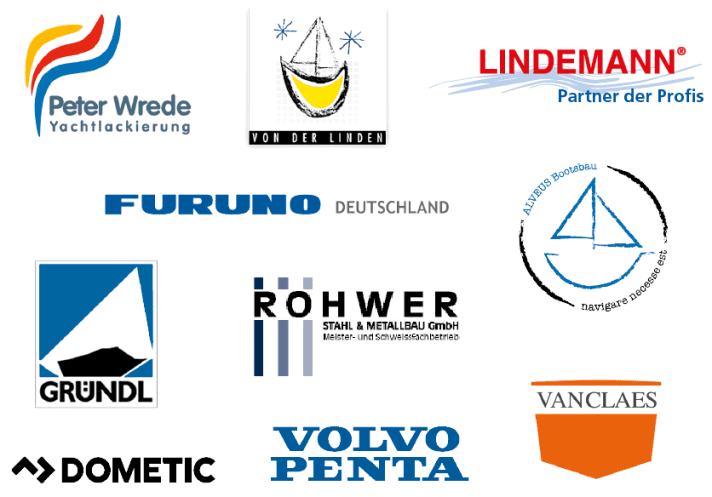





All episodes of the refit project:
- Part 1: Stocktaking
- Part 2: Replacing the rear view mirror
- Part 3: The underwater hull
- Part 4: GRP repairs
- Part 5: Antifouling coating
- Part 6: The motor foundation
- Part 7: The stringer system
- Part 8: The new engine
- Part 9: The new tank
- Part 10: The interior fittings
- Part 11: The interior work continues
- Part 12: The side panelling
- Part 13: Surface treatment and colour
A new engine is needed, there are no two opinions. It had to be a petrol engine, that was clear from the start. If possible, it should not be bigger or heavier than its predecessor. A few more horsepower would be okay. No insurmountable problems, the only question is who is going to buy us a brand new engine unit for which we easily have to fork out 25,000 euros in the shop. Volvo Penta does it, and we say thank you. The engine builders from Gothenburg are on board. This means that our Conquest 1950 CC is now adorned with a Volvo Penta V6-240-CE/DPS.
The new six-cylinder engine has a capacity of 4300 cc and produces 240 hp at 5800 rpm. That is exactly 96 hp more than its predecessor. The engine block, cylinder heads and exhaust system of the V-6 engine are made of aluminium. This means that the engine and drive unit together weigh just 408 kg. Also noteworthy are standards such as electronic engine management, direct injection and variable valve timing, which enable a compression ratio of 11.0 : 1, and dual-circuit cooling. All of these together ensure high torque and reduce fuel consumption and pollutant emissions. It goes without saying that a dual-circuit cooled engine reaches the ideal operating temperature and is less susceptible to corrosion.
New motor provides perfect handling and good acceleration
The Z-drive impresses with smooth and noiseless gear changes, power steering, duoprop technology and stainless steel propellers. In German: with perfect handling and excellent acceleration values. All that remains in the final verse of the "hymn of praise" is the power trim, which allows the boat to be brought into the optimum swimming position at all times. This saves fuel and makes it fast. So everything is fine. Or is it?
Yes and no! When it comes to the stability of the new engine foundation, the experts argue. While the boat builders are convinced that their sandwich made of Coosa composite panels and glass roving fabric fulfils all the requirements placed on a solid engine foundation and will last for a thousand years, the engine manufacturer insists on a reinforcing steel insert for the front "engine feet" of the six-cylinder engine. We want to play it safe and convince the boat builders that two 10 mm thick stainless steel plates can't do any harm.
No sooner said than done. The panels are cut to size, two holes with 10 mm threads are drilled in each to attach the elastic (rubber-metal) "feet" and they are laminated exactly where they belong.
The motor must be precisely aligned
What comes next is pure routine for the Volvo specialists at Carl Baguhn. The engine is hung in the crane, placed on the prepared foundations in the boat and bolted to the front and rear with eight 10 mm bolts. It is important that the engine is positioned "correctly". With a suitable gauge and the height-adjustable "feet", aligning the engine with millimetre precision is one of the easiest exercises for the trained fitters.
When installing the Z-drive, "height control" and dexterity are required. If everything is right, the drive shaft slides into and the Z-drive onto the transom plate almost by itself. A tip: If it gets stuck, jerk it a little and turn the propeller. Finally, six self-locking nuts are tightened to the correct torque, the shift cable is hooked in and the trim cylinders are fitted and secured.
Video of the refit project
The BOOTE Refit project is supported by


